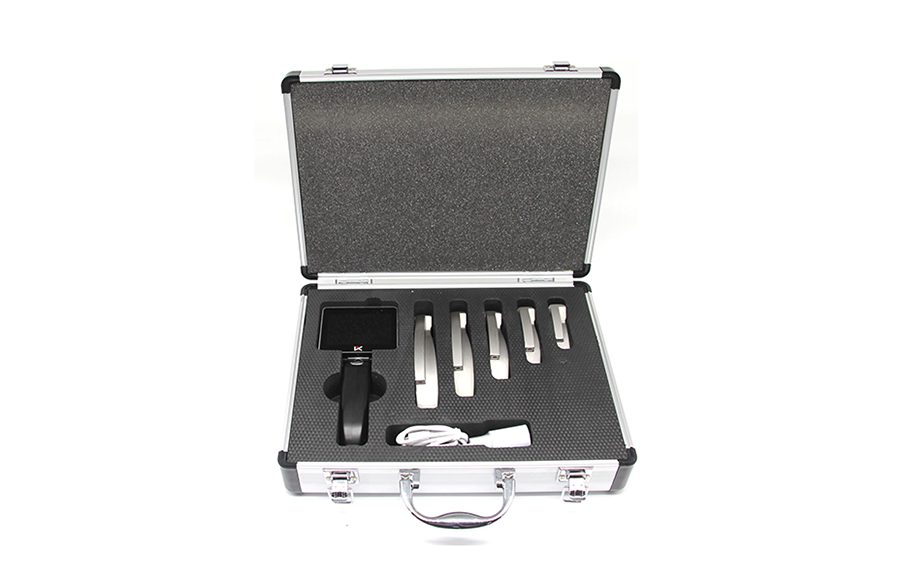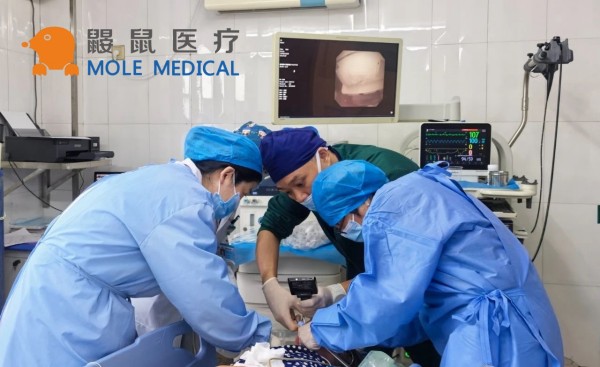How to use anesthesia laryngoscopy?
Sep 04, 2023
1.Direct anesthesia laryngoscopy is performed under mucosal surface anesthesia. The surgeon holds the mirror in his left hand and protects the upper teeth with thick gauze…
Anesthesia laryngoscopy
1.Direct laryngoscopy is performed under mucosal surface anesthesia. The surgeon holds the mirror in his left hand and protects the upper teeth with thick gauze. The mirror is introduced into the mouth along the back of the tongue and transferred deep into the midline, to the base of the tongue. The thumb and index finger of the right hand assist in holding the tube from front to back when the epiglottis is seen from the laryngoscope. Tilt the proximal end of the laryngoscope up (tilted forward when sitting) and the distal end toward the back of the pharynx without touching it. Continue into the lens beyond the free edge of the epiglottis. After seeing the epiglottis tubercle, lift the laryngoscope with the left hand with a parallel upward force, and press the epiglottis to fully lift it to expose the larynx. At this time, if laryngospasm occurs, the glottis is closed and the glottis cannot be seen.
2.The laryngoscope should be fixed in place, and the laryngeal image can be seen after the laryngospasm touches for a moment. If the laryngoscope touches the mucosa of the laryngeal cavity too deeply to cause spasm of the arch reflex, the laryngoscope should be slightly retracted for observation, and the subject should be told to make the sound of “clothes” and observe the movement of the vocal cords. At this time, the surgeon can perform various necessary operations with the right hand.
3.If the subject’s neck is short and thick, and the anterior commissure of the vocal cords is not easily exposed, the head must be raised, the left hand lifts the laryngoscope up, the right thumb presses the laryngoscope up from the bottom, and the remaining fingers of the right hand should be fastened on the patient’s right upper The teeth are supported in unison to lift the epiglottis. If this approach is unsuccessful, you can ask your assistant to compress the thyroid cartilage down or use a combined laryngoscopy instead. An anterior arthrolaryngoscope not only provides a clear view of the anterior vocal fold joints, but can also be inserted into the glottic fissure to examine the subglottic space.
4.When examining young children, in order to prevent laryngeal edema after this operation, the tip of the laryngoscope should not compress the epiglottis, and the base of the tongue should only be lifted forward, and the epiglottis will stand up to expose the larynx.
5.Complications of anesthesia laryngoscopy
It usually happens rarely. Children, especially those with spasticity, may develop severe, life-threatening laryngospasm during surgery. During the operation, the movements should be as gentle as possible to reduce the damage to the throat mucosa and reduce the chance of hematoma, bleeding or bleeding secondary to infection.
Latest Articles

Disposable Nephroscopes: Redefining Safety & Efficiency in Urology
Introduction The shift towards minimally invasive urological surgery has found a pivotal ally: the disposable nephroscope. As traditional reusable scopes grapple with persistent biofilm contamination risks and soaring sterilization costs, the global medical community is rapidly adopting single-use solutions. This article analyzes the clinical value, technological evolution, and dynamic innovation landscape driving this transformative shift. ... Read more

Disposable Video Laryngoscope Blades: The Ultimate Solution for Preventing Cross-Contamination
In the operating room, as the cold light of a video laryngoscope illuminates a patient’s airway, an age-old medical challenge is being redefined: How can life-saving instruments avoid becoming vectors of infection? Jiangsu MoleMedical drives an innovative safety revolution—replacing reusable devices with single-use, sterile laryngoscope blades that create a pure barrier for critical airways. Traditional video ... Read more
-2.jpg)
FDA & CE Approved Video Laryngoscope: What Makes It Stand Out?
Introduction In high-pressure emergencies and precision-driven operating rooms, video laryngoscopy is revolutionizing airway management. Mole Medical’s FDA and CE-certified technology replaces tactile-dependent “blind intubation” with real-time visual navigation – enhancing safety, accuracy, and clinical outcomes worldwide. Why Certification Matters Mole Medical’s dual certifications validate its global compliance and performance: FDA Clearance: Rigorous validation of safety/efficacy ... Read more

Mole Medical Showcases Advanced Endoscopy Solutions at CMEF Autumn 2025, Driving Global Partnerships
Guangzhou, China – September 26-29, 2025 – The 92nd China International Medical Equipment Fair (CMEF Autumn) concluded successfully on September 29th at the Canton Fair Complex in Guangzhou. Mole Medical Technology Co., Ltd. (Mole Medical) made a significant impact at the event, drawing global medical professionals and partners to its booth (Hall 2.1, Stand Q24) ... Read more

How to Use Disposable Ureteroscopes Safely and Efficiently
In the field of urology, the application of disposable electronic ureteral-kidney pelvis endoscopy catheters is leading the technological innovation in minimally invasive surgeries. According to the 2024 multi-center research data from China’s urology department, among the over 5,000 surgeries included, the patient group using disposable catheters performed significantly better in key indicators such as operation ... Read more



